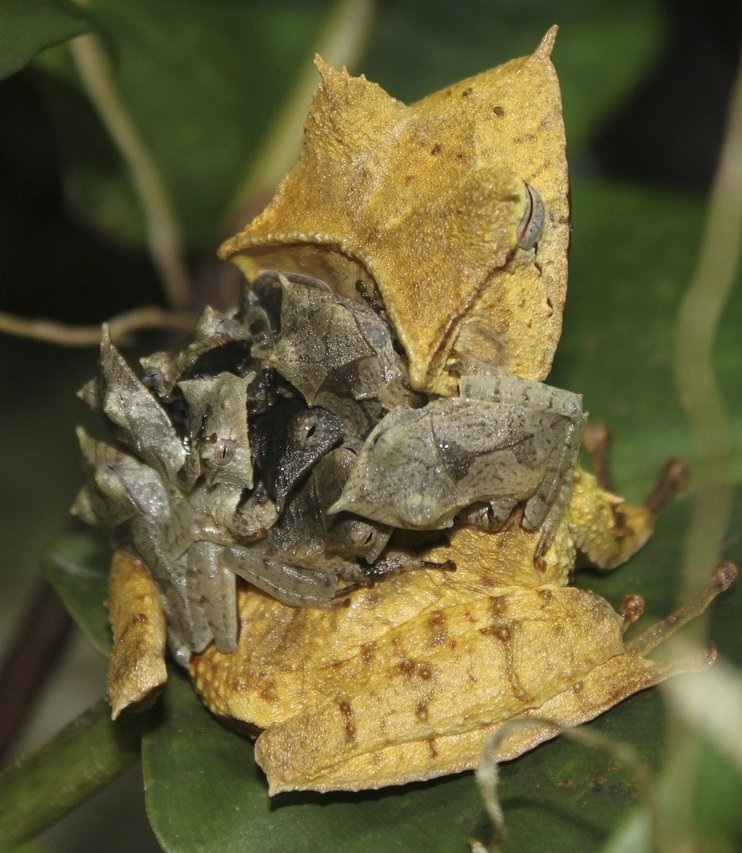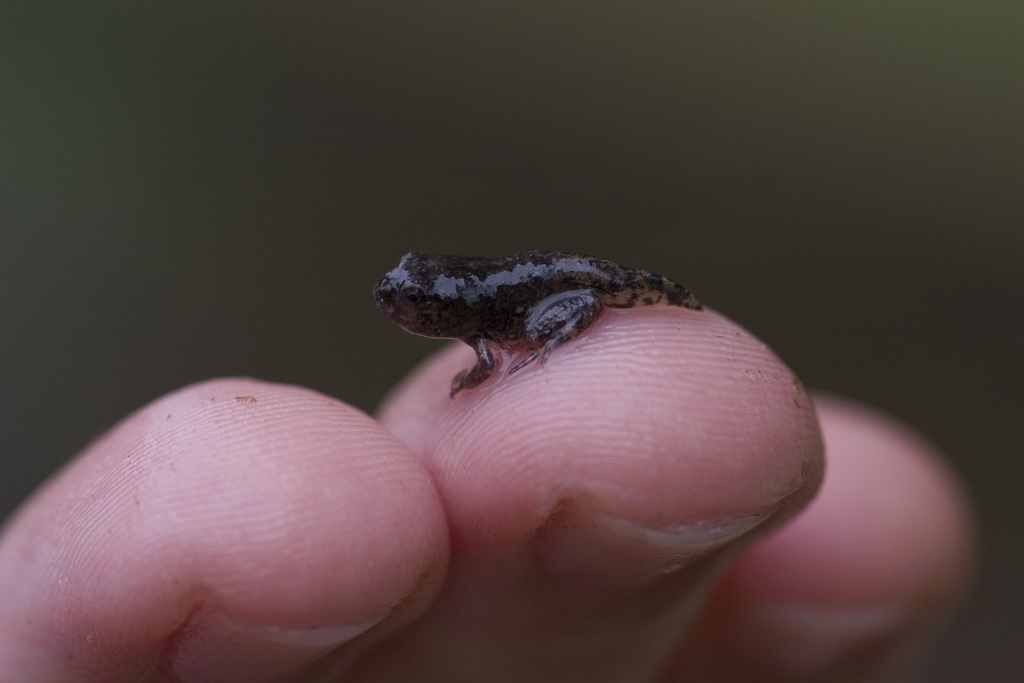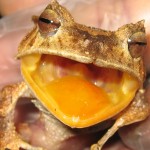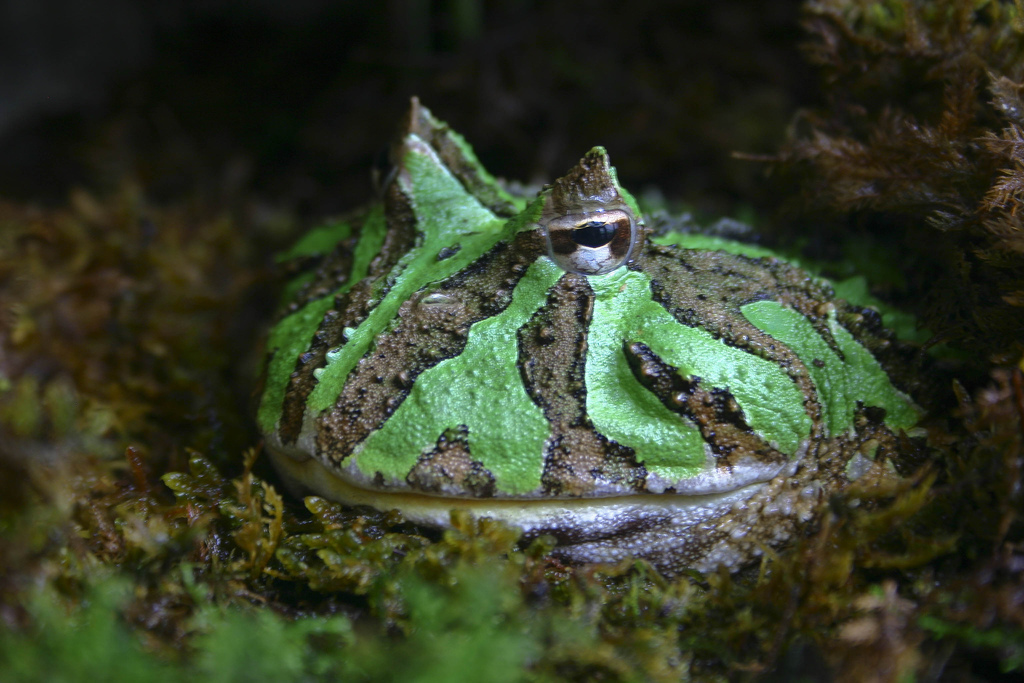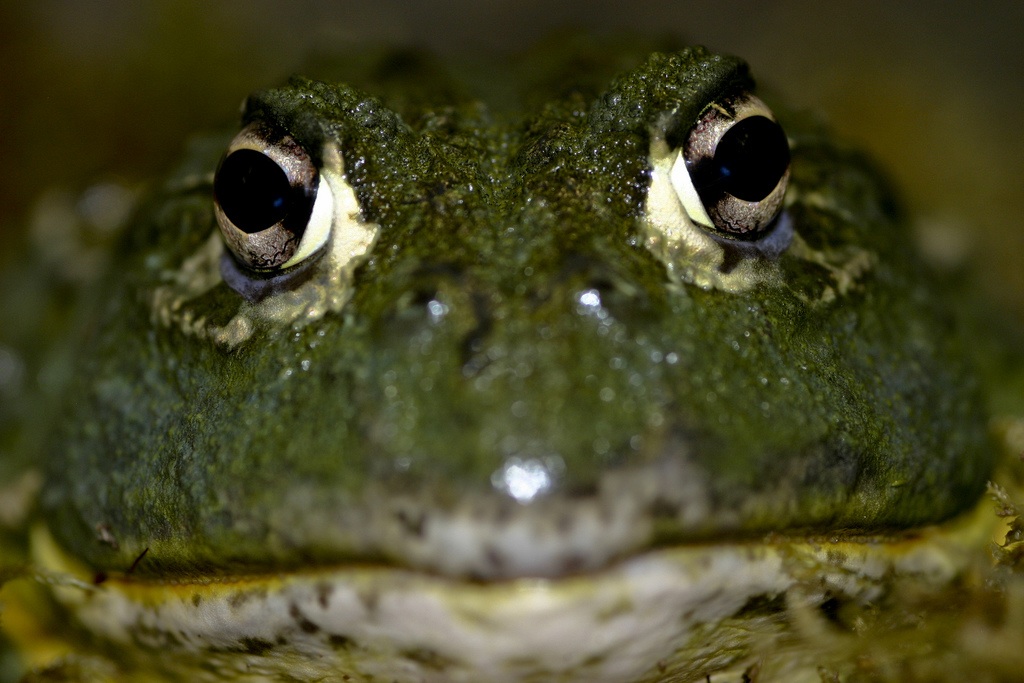Cute Frog of the Week: September 6, 2010
The banded horned tree frog may not be the most attractive looking thing you’ve ever seen, but that’s the point! Its leaf-like camouflage can trick any number of predators. But if a hawk or other bird of prey is discerning enough to spot one, this feisty fellow has another trick up its sleeve: a horn. The triangular protrusion on the edge of their upper eyelids gives the frogs an aggressive appearance. And it’s no front. Horned tree frogs fight off predators by viciously biting at them. Another handy trait unique to banded horned tree frogs is a flat back, which allows this amphibian to blend into its surroundings in a pinch. It’s also clearly good for giving the kids a lift.
Photo credit: Brian Gratwicke, Panama Amphibian Rescue and Conservation Project.
Like what you see here? Then hop to it and text “FROG” to 20222 to give $5 to save a frog today! (Find the privacy policy here.)
Every week the Panama Amphibian Rescue and Conservation Project posts a new photo of a cute frog from anywhere in the world with an interesting, fun and unique story to tell. Be sure to check back every Monday for the latest addition.

